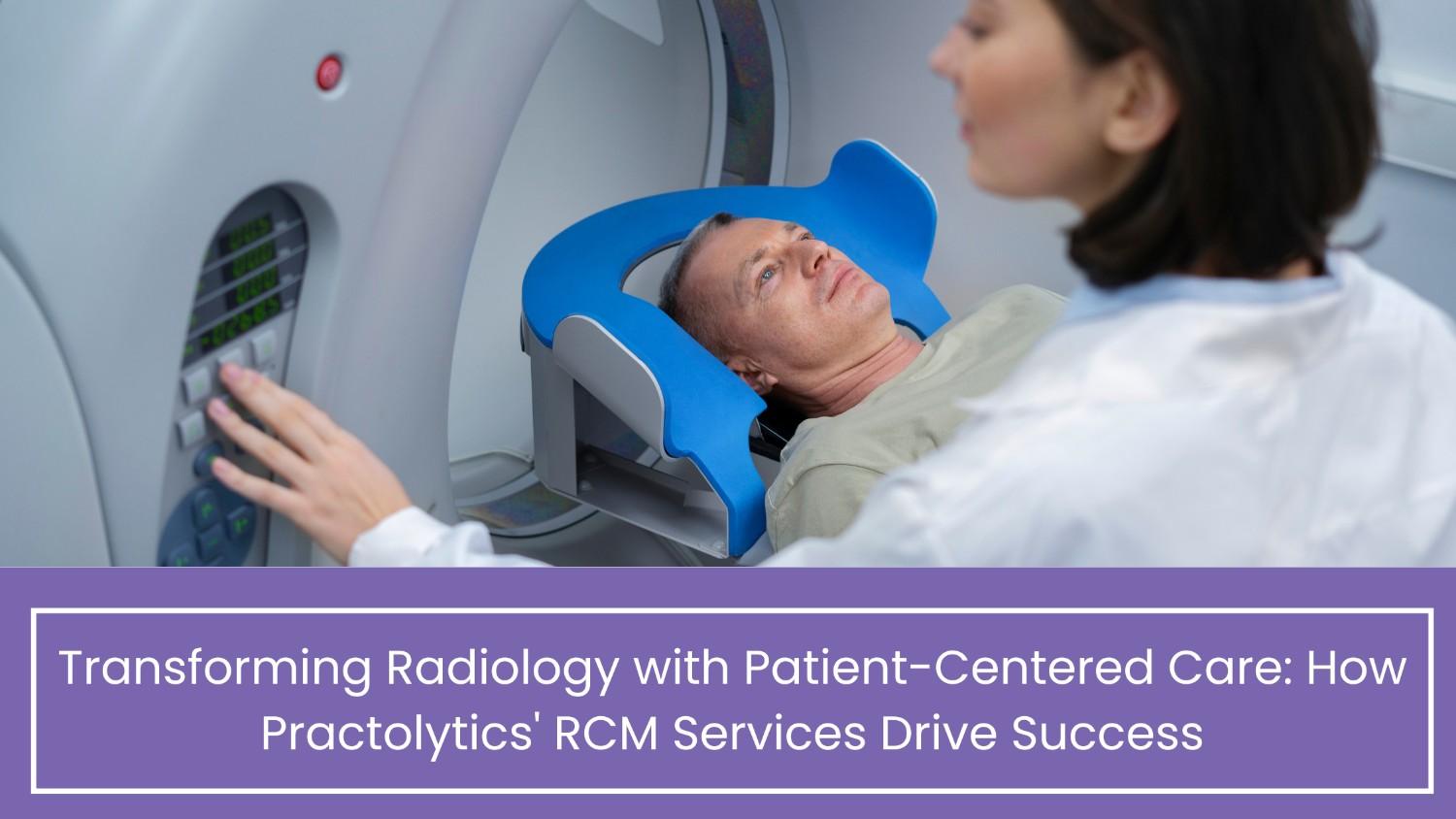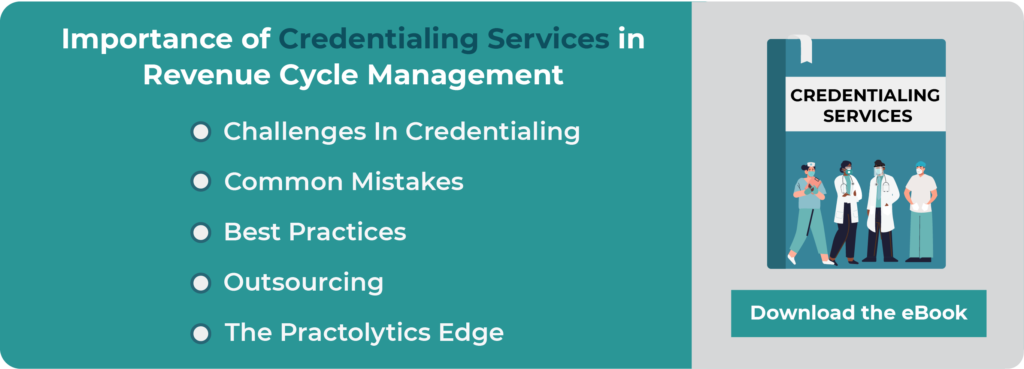Transforming Radiology with Patient-Centered Care: How Practolytics’ RCM Services Drive Success
Learn how Practolytics’ RCM services enhance patient-centered radiology by optimizing revenue cycles, boosting efficiency, and reducing administrative burdens.
The dynamic realm of healthcare is currently shifting towards models that enhance the quality of patient care. Patient-centered healthcare services are custom services that are tailored on the basis of individual preferences and requirements of patients, ensuring that they have a proactive role in making decisions for their own health.
Value-based-models, on the other hand, emphasizes on enhancing the quality of patient care by rendering quality care while enhancing resources and cutting costs. Both these models are pillars to modern radiology landscape as they focus to optimize patient outcomes and improve satisfaction
Patient preferences and shared decision making are two crucial aspects that could be incorporated into imaging practices to align patient expectations and values with outcomes and diagnoses. Active involvement of patients in their healthcare decision, especially in radiology could go a long way for healthcare providers and patients, bringing in better healthcare environment.
Patient-centered imaging is a radiology practice that focuses on preferences, needs, and values of patients throughout the imaging process. It means to engage patients in discussions on their health, imaging options, ensuring that they are comfortable and well-informed about the procedures they endure.
Table of Contents
Key Principles of Patient-Centered Care in Radiology
- Respect for patients’ individual needs and choices.
- Giving out clear and concise info on imaging procedures, benefits, other potential options, and possible risks.
- Collaborative decision-making to be more inclusive of patients’ values and choices by utilizing the best-given evidence.
- Proper access to imaging services for patients with different demographic and social factors.
- Delivering emotional aid and acknowledging anxiety issues in patients concerning imaging procedures.
Benefits of Patient-Centered Imaging for Radiology Patients and Healthcare Providers
For Patients:
- When they know what they are involved in, their trust and satisfaction improve. With improved patient value and respect, better cooperation and understanding of the imaging services.
- Proper communication and collaboration enable patients’ clear view of their health conditions and imaging process, drastically reducing uncertainty and anxiety.
- Including patients in decision-making can bring about more adequate imaging research and studies, ultimately enhancing health outcomes.
For Radiology Healthcare Providers:
- The holistic patient-provider rapport can be enhanced by building trust through patient-centric and value-based care.
- There is a higher chance for patients to follow through with the provider-suggested treatment options when they are included in decision-making.
- Ensuring imaging studies harmonize with patient needs can reduce redundant expenses. This will enable effective usage of the given health resources.
Methods for Assessing Patient Preferences
Surveys: To gather an idea about patient preferences, radiology practices can gather structured questionnaires related to various aspects in imaging services including timing, communication, and modality.
Interviews: Exclusive interviews for individual patients enable a thorough understanding of patient’s choices and deliver insights into any expectations or concerns in specific.
Focus Groups: To identify common patient preferences and potential growth, group discussions can be conducted for enhanced imaging services
Examples of Patient Preferences in Imaging
Imaging Modality Type: Patients have various comfort ranges, expected accuracy, or suggestions due to bad previous experiences. Allow them to pick the right type of imaging modality.
Appointment Timing: Allowing patients to choose preferred appointment timings to fit into their personal schedules, professional and other obligations.
Communication Options: Allow patients to have a say on their preference of how they would like to receive details about their imaging procedures, and results. It could be email, call, or personal consultations.
Types of Shared Decision-Making in Radiology
Patient Engagement: Allowing patients to have active involvement in the decision-making procedures.
Information Exchange: Allow patients to have complete and unbiased information about their imaging options by delivering them extensive information.
Deliberation: Ensure that the patient understands the pros and cons for their chosen imaging options and help them make informed decisions.
Decision-Making: Providers and patients must come to a consensus on what’s the best course of action which adequately aligns with patient’s choices and clinical evidence.
Steps Involved in the Shared Decision-Making Process
- The healthcare providers shared a detailed understanding on the imaging options, benefits, risks involved, and alternative recommendations.
- The provider and patient have a discussion regarding the information in question and allows the patients to express their preferences, concerns, and expected values.
- Together, they come at a decision that manifests the patient’s needs along with the best available evidence.
Tools and Resources to Facilitate Shared Decision-Making in Radiology
Decision Aids: Providing patients with proper tools like videos, online resources, pamphlets, and such will help patients grasp the information on imaging methods, and the repercussions of their preferences.
Informational Brochures: During and after imaging study, it is imperative for patients to understand the potential outcomes of the imaging services rendered. Therefore, written materials like brochures can provide the necessary information.
Consultation Services: Providing consultation services with radiologists or any other specialists to explain and discuss imaging choices thoroughly and respond to patient queries.
Integrating Patient Preferences and Shared Decision-Making into Value-Based Care Models
Implementing patient preferences and Shared Decisions into value-based models involves various processes. Firstly, practices must implement SDM tools like brochures, decision aids, and consultation options. This helps the patients to have a thorough view of the imaging options and therefore they can make informed decisions.
Another crucial aspect is to train and educate the radiology staff on patient-centered care like SDM principles, communication keys, and clinical decision-making.
Take support from technology for patient engagement and SDM. It can be done by implementing Electronic Health Record systems, mobile apps, online portals, telehealth options, and such to cater to patients’ access to information and allow them to participate in the decision-making process.
However, there are still challenges concerning patient-centered services and SDM in the value-based care model. Workflow integration and time constraints can impact proper SDM discussions during consultations. It is essential to ensure equitable access to patient-centered services, which could come off as a major challenge. In addition, to track patient outcomes and cost-effectiveness in value-based care models, practices must measure the imaging impact on value-based metrics.
Case Studies of Successful Integration of Patient Preferences and Shared Decision-Making in Radiology
One case in radiology clinics that uses decision aids for breast imaging, bringing in enhanced patient trust, satisfaction, and adherence to the practice recommended procedures. Another case exhibits hospitals leveraging telehealth consultations in discussing imaging options with patients, increasing patient engagement and reducing access hurdles.
Advanced and cutting-edge practices in patient-centered imaging involve interactive online portals and navigation programs for patients. Interactive online portals enable patients to view imaging outcomes, communicate with providers, and get a hold of educational materials. Patient navigation programs involve dedicated assistance programs to help patients through the imaging process, ensuring they are clear about their options.
Supporting Radiology Practices with Practolytics
Practolytics specializes in providing crucial support to radiology practices aiming to integrate patient preferences and shared decision-making into their workflows. By offering comprehensive medical billing services tailored to the complexities of radiology, Practolytics ensures streamlined revenue cycle management. This includes precise coding for diverse imaging procedures, efficient claim submission, and proactive denial management to optimize financial outcomes. Moreover, Practolytics facilitates practice growth through credentialing assistance, contract negotiation, and strategic consulting, empowering radiology providers to focus more on delivering personalized patient care. By partnering with Practolytics, radiology practices can enhance operational efficiency, improve patient satisfaction, and effectively navigate the evolving landscape of value-based care.
ALSO READ – Finding Success: Credentialing Essentials for Radiology Practices
Talk to Medical Billing Expert Today — Get a Free Demo Now!






